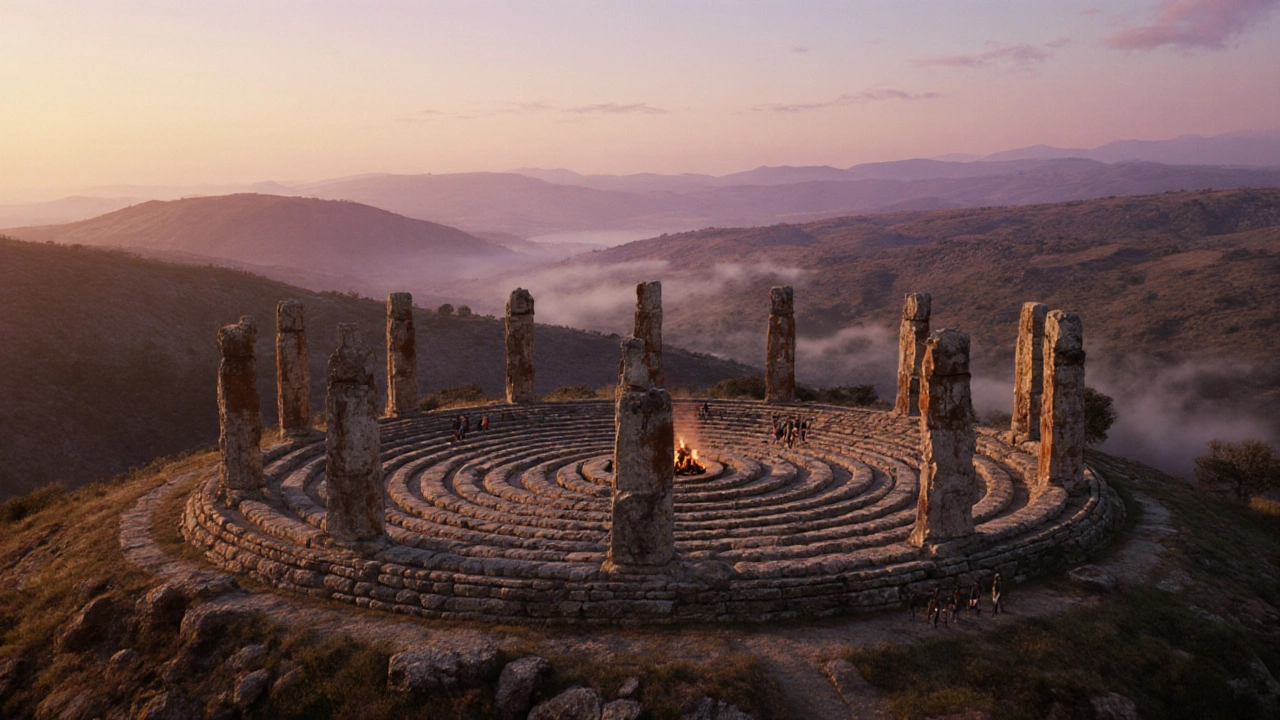
Explore Göbekli Tepe, the world's oldest temple, its age, archaeology, visitor tips, and why it reshapes our view of prehistoric humans.
When you hear oldest temple, the earliest surviving place of worship built in the Indian subcontinent. Also known as ancient shrine, it offers a living snapshot of Vedic worship, stone carving, and community life that dates back millennia.
That ancient shrine belongs to the broader group of ancient Indian temples, structures erected before the 8th century CE, often using sandstone or granite. These sites are not just stone; they are heritage sites, officially protected locations recognized for their cultural, historical, and architectural value. Because of that protection, you’ll find clear signage, guided tours, and preservation work that keeps the stories alive.
Visiting any of these heritage sites automatically makes you a pilgrim at a pilgrimage destination, a place where believers travel for spiritual merit, festivals, or personal vows. The ritual of ringing a bells, offering incense, or simply sitting in silence ties you to centuries of worshippers who felt the same reverence.
The design language of the oldest temple follows Vedic architecture, a set of principles documented in ancient scriptures that dictate layout, orientation, and symbolism. For example, the sanctum (garbhagriha) aligns with the cardinal points, while the shikhara (tower) symbolizes the mountain abode of the deity. These rules impact everything from the height of the spire to the placement of the water tank, creating a holistic experience that blends art, astronomy, and devotion.
Because Vedic architecture shapes the temple’s form, it also determines the kind of festivals you’ll witness. During Navratri, the complex may host a ten‑day dance of light, while Shivratri could see devotees staying up all night in the main sanctum. Knowing these patterns helps you plan trips that match your interests, whether you crave vibrant celebrations or quiet reflection.
Travelers who focus on the oldest temple often ask: how can I get there? Most are reachable by a mix of train, bus, and short walks from the nearest town. The nearest airport usually lands you within a two‑hour drive, and local guides are adept at navigating narrow lanes that lead to the stone entrance. If you’re a history buff, bring a notebook; the carvings often tell mythological tales that aren’t written elsewhere.
Beyond the main shrine, the surrounding area typically hosts smaller subsidiary shrines, each dedicated to a different deity or a local guardian spirit. These add layers to the pilgrimage experience, letting you trace a spiritual circuit that mirrors ancient routes. The nearby market stalls often sell handmade artifacts, offering tangible memories of your visit.
In recent years, government and NGO projects have improved visitor amenities while preserving authenticity. You’ll find clean washrooms, informational boards, and sometimes audio guides in multiple languages. Yet the core atmosphere remains untouched: the echo of chants, the scent of incense, and the cool stone underfoot.
Whether you’re chasing the title of “oldest temple” or simply want to feel the pulse of India’s spiritual heart, the collection of posts below breaks down everything you need – from the exact location and historic timeline to practical tips for a hassle‑free trip. Dive in to see how each article adds a piece to the puzzle of India’s timeless worship places.

Explore Göbekli Tepe, the world's oldest temple, its age, archaeology, visitor tips, and why it reshapes our view of prehistoric humans.